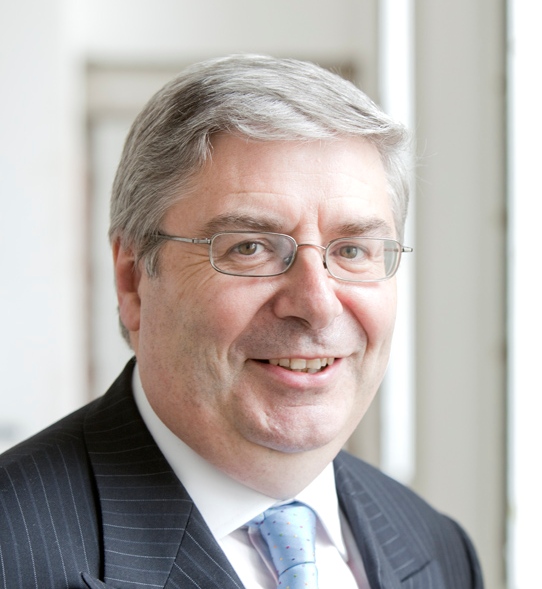Elegant, artistic, pleasurable staircases are back. Having been hidden away behind banks of lifts, the architectural and artistic value of staircases has again been recognised – as has the enjoyment of using them as they allow light and transparency between the floors of buildings in a way in which those hidden staircases do not.
William Chambers was the master of the grand architectural staircase, as seen at Somerset House in the Stamp Stair and Nelson Stair. The Somerset House Trust more recently added a modern new addition with Eva Jiricna’s staircase in the West Wing while, a little to the north, at the London School of Economics, architects O’Donnell Tuomey organised the new Saw Swee Hock Student Centre around a striking concrete central staircase.
Now, architects Wilkinson Eyre have provided the Wellcome Collection in Euston Road London with an elegant curved staircase as the centrepiece of the £17.5m refurbishment which has provided more space for public activities to enable the Collection to respond to the high visitor numbers (now over 500,000 per annum) which have been achieved since it started its programme of activities exploring “medicine, life and art” in 2007.
Over 40% more gallery space has been created, which enables two concurrent temporary exhibitions to run for the first time in addition to the permanent exhibitions. The special exhibition ‘The Institute of Sexology’ opened in November 2014 and the new exhibition ‘Forensics: The anatomy of crime’ has now opened. In addition the Wellcome Library’s Reading Room has been refurbished as a space for exhibitions, library and events, the Research Library has been expanded, a new space “The Hub at Wellcome Collection” has been created for interdisciplinary research and public engagement and a new restaurant has been provided at the top of the new stair.
“Since opening Wellcome Collection seven years ago we’ve been thrilled time and again by the extraordinary public response to our cultural explorations of science, history, art and health. Our beautiful helical stair breathes new life into our building by transporting visitors to expanded galleries and spaces where we will take every opportunity to experiment with new ideas and activities and add to the rich legacy of Sir Henry Wellcome’s curious intellect, research and collections.” (Clare Matterson, Director of Strategy at the Wellcome Trust)
“Just as our spectacular new stairs offer different glimpses of our exhibitions and collections from almost every tread, so Wellcome Collection’s new, larger incarnation marks Wellcome Collection out as a space where curious minds can find even more diverse, fresh and often unexpected perspectives on what makes us human. We hope that our new exhibition, gallery and programming formats reward and inspire our ever growing numbers of visitors.” (Ken Arnold, Head of Public Programmes at Wellcome Collection)
With the new exhibition and activity space on the first floor, Wellcome does what it does best – combine medicine, science and art in work by contemporary artists including Mauro Peruchetti, Luke Jerram, Annie Cantrell and William Cobbing.
In ‘Forensics: The anatomy of crime’ artists show views on murder, death and forensic science. ‘Abu no disce omnes’ is a new work specially commissioned by Wellcome Collection from Sejla Kameric, in which the visitor enters a cold fridge to view a visual record of forensic medicine’s role in Bosnia as modern scientific investigations are carried out into mass graves and the people who disappeared in the 1992-95 war, and seeks to achieve identification of the victims – a long slow process. Teresa Margollos, winner of the Artes Mundi 5 prize in 2013, displays ’32 años Levantamiento y traslado donde cayo el cuerpo asesinado del artista Luis Miguel Suro’ – the tiles from the floor on which her close friend Luis Miguel Suro was murdered in Guadalajara, Mexico. The installation of these tiles, still with bloodmarks on them reminds the visitor of the emotional aspects of criminal death and makes it very real. Forensic science may be logical and analytical, but with death there is pain and loss.
Using graphics and bones on a table, Jenny Holzer’s exhibit ‘Lustmord’ engages the viewer with the anguish of murder involving rape, often of innocent women caught up in conflict, while Christine Borland exhibits two anonymous skulls bought from a company who supplied skeletons and bones to medical students (no longer allowed) and two bronze heads showing what these two people may have looked like, created in conjunction with a forensic anthropologist and facial reconstruction experts, showing the beauty of these two people, which has become anonymous skulls traded as commodities.
“I like the idea of something very small, whether it be dust or a mark, something seemingly unspectacular in many situations, and then being able to build a narrative from that. It’s a scientific discipline, but it also speaks of imagination and art.” (Jenny Holtzer)
A fascinating exhibition with much more to see about forensic science and the wide range of applications – recording crime scenes, bringing criminals to justice and also identifying and dealing with wrongful convictions.













[…] John repeat their dexterity at staircase design, something also achieved by Wilkinson Eyre for the Wellcome Collection in Euston. In Newport Street, three well-designed, elegant, geometrical staircases connect the […]
Great post